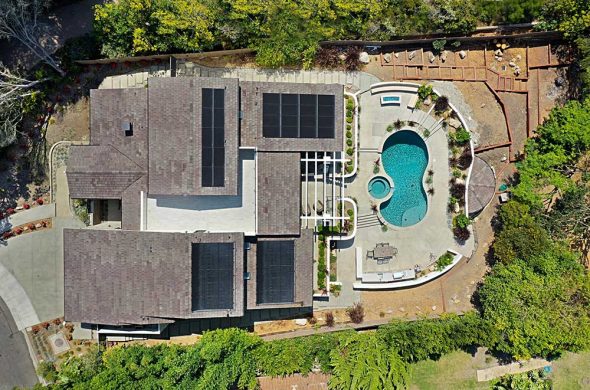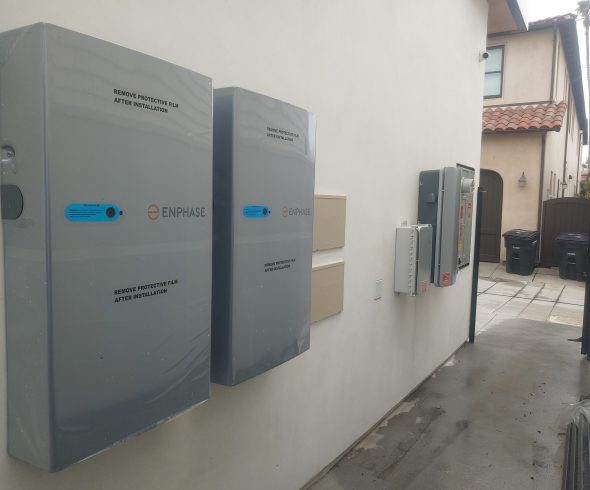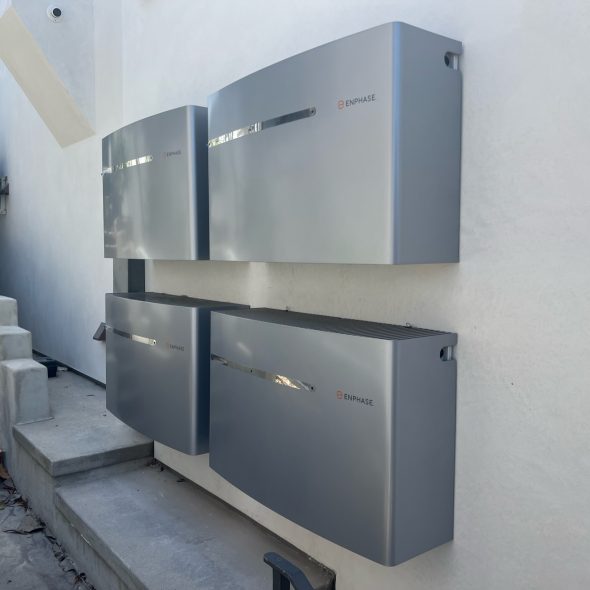Home » Service » Solar Battery Storage Installation » How It Works
How It Works
A Smarter Way to Power Your Home
Your solar + battery system is more than just panels on a roof—it’s a complete energy solution designed to give you control, flexibility, and independence. To understand how it works, it helps to look at how each piece fits together:
- Solar Panels + Inverters capture sunlight and convert it into usable electricity for your home.
- The Battery stores that energy so you can use it later—at night, during peak utility hours, or when the grid is down.
- Your Utility Connection remains in place, but instead of depending on it for everything, you decide how much you want to use it.


Self-Consumption vs. Savings
When your solar system produces electricity, you can either:
- Use it in real time – Power your home directly while the sun is shining (self-consumption). Example: You run your dishwasher, laundry, and AC during the day so your solar panels cover the load without pulling from the grid.
- Store it in your battery – Save excess energy for later, when rates are higher or the sun is down (another form of self-consumption). Example: Your system produces more than you need at noon, so the extra charges your battery. At 6 p.m., you use that stored energy instead of paying peak rates.
- Export it to the grid – Send unused electricity back to your utility, which may credit you depending on local programs. Example: On a sunny spring day when your battery is full and your home’s demand is low, extra solar flows back to the utility for credits.
If your solar system is undersized for your needs, you often get better savings value by storing all solar production into the battery first. That way, your battery is ready to discharge during peak utility times when rates are highest. Once the battery is full, your solar system can then supply power directly to your home.
Example: Your home uses most of the solar power during the day, leaving little “extra” to charge the battery. By prioritizing charging the battery first, you make sure it’s ready to power your home at 6 p.m. when electricity is most expensive.
The Flow of Energy
Here’s what a typical day might look like with solar + battery:
- Morning – Panels begin producing power; inverters convert that energy, and your home uses solar first.
- Midday – Solar often produces more than your home needs. Extra energy charges your battery.
- Evening (Peak Time at 6 PM) – As the sun sets and rates spike, your battery powers your home, reducing or eliminating the need to draw from the grid.
- Outage – If the grid goes down, your battery automatically keeps essentials—or even your whole home—powered.


Why It Matters for You
This isn’t just about lowering bills—it’s about owning your energy. With solar + battery storage, you:
- Use more of the energy you generate.
- Protect yourself from utility rate hikes.
- Keep your home powered during outages.
- Decide how much (or how little) you want to rely on the grid.
Ready to Design Your System?
With solar panels, inverters, batteries, and the utility working together, you’re in control of how your home is powered—every hour of every day.
